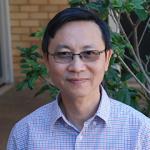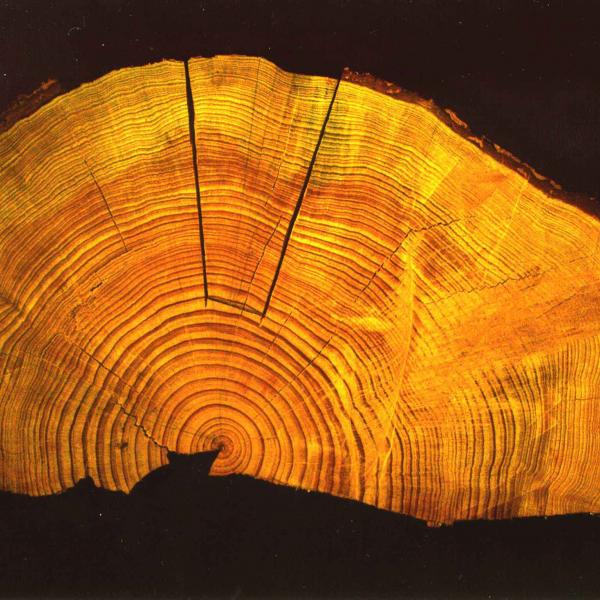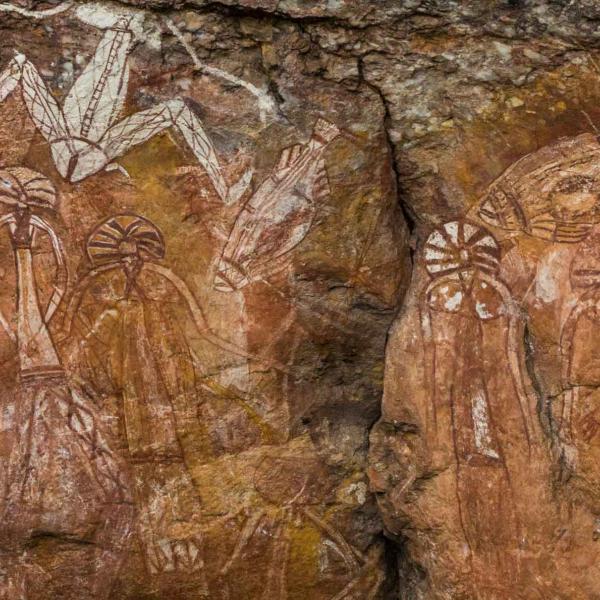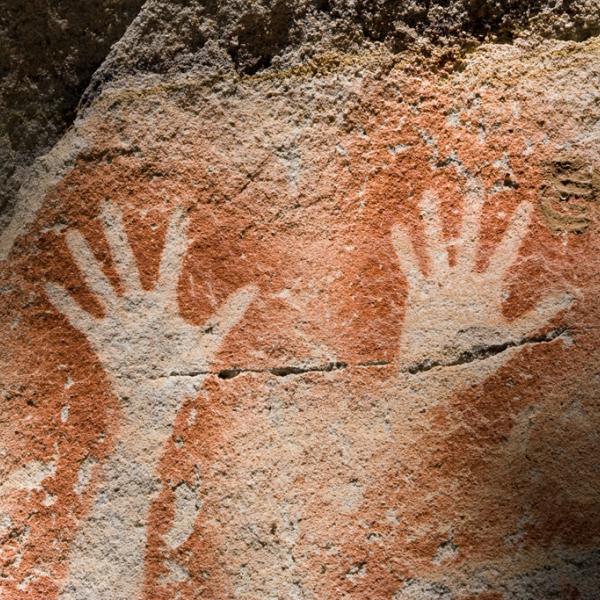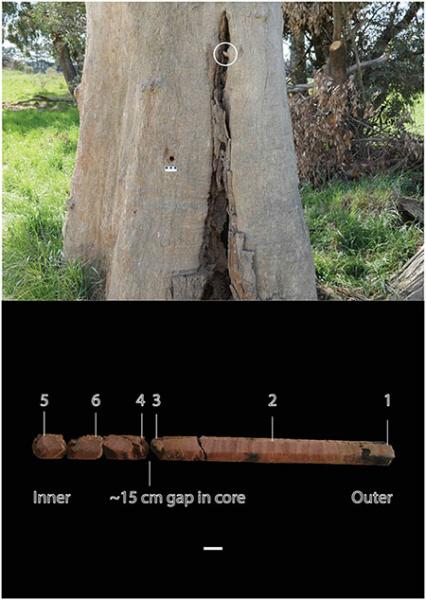
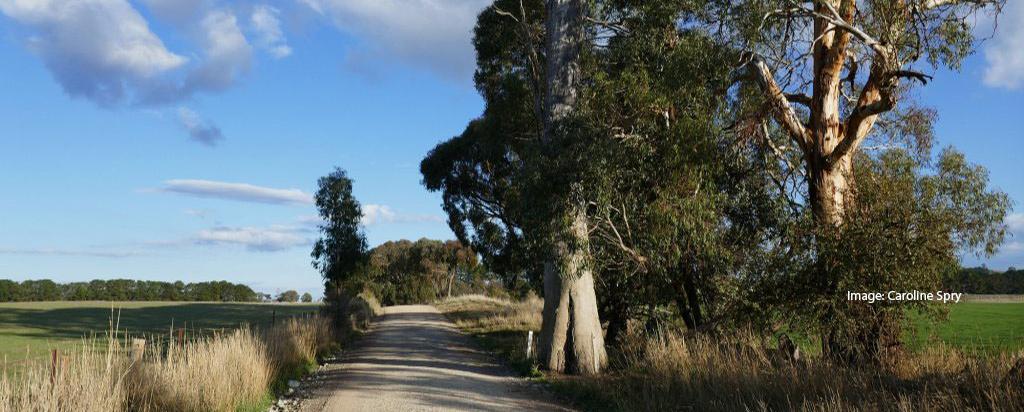
Published on the 16th June 2020 by ANSTO Staff
Key Points
- A culturally-modified tree with an embedded stone tool on Wuradjuri country in NSW is considered to be an “unprecedented find’ and an example of the resilience of Aboriginal cultural knowledge
- Members of the Orange Local Aboriginal Council collaborated on the research
- Radiocarbon dating at ANSTO establish the age of the tree to be relatively young at about 100 years
Radiocarbon dating at ANSTO was used to establish the age of a culturally-modified tree embedded with an Aboriginal stone tool on Wiradjuri country in NSW.
As Australian eucalypts often do not have annual rings, it is not possible to date them with the standard dendrochronology method.
As the authors from large number of academic institutions, the Orange Local Aboriginal Land Counciland ANSTO, led by Dr Caroline Spry of La Trobe University, explained in a recent article for The Conversation, the tree has a large scar, where an Aboriginal stone tool is still lodged in the re-growth.
It is considered to be an “unprecedented find’ amongst the archaeological community.
The project involved collaboration with the local Aboriginal land council in Orange to carry out an archaeological study of the tree, Wala-gaay Guwingall. This was translated by the council as‘the bare parts of the tree that has been stripped off with a stoneaxe’.
Trees marked by Aboriginal cultural practices are a distinctive part of the Australian landscape.
Aboriginal people have long used bark, wood and trees for practical and symbolic purposes. Many of these trees contain scars and carvings from these activities, although over time the marks are often enveloped by new growth.
No one from the Orange Aboriginal community had any recollections about the tree.

The location of Core 1 in relation to the scar and embedded stone (top white circle indicated location of stone) and Core 1 showing the locations sampled for radiocarbon dating. Images from article published in Australian Archaeology
“This is where radiocarbon dating linked to the release of radioactivity from weapon testing in the 20th century, known as the ‘bomb pulse’, can provide precise dates for an object,” explained Dr Quan Hua, a co-author on the paper published in Australian Archaeology last week.
“People often think of radiocarbon dating for ancient artefacts but is also useful to determine the age of more recent objects,” said Hua.
After two cores from an area of scar overgrowth were carefully removed from the tree, radiocarbon analyses along one of these cores by accelerator mass spectrometry indicated that it was relatively young. The tree began growing at the start of the 20th century and died a hundred years later during the millennium drought.
The research suggested some “culturally-modified trees” may be much younger than previously thought.
The investigators reported that the stone tool was embedded at some time between 1950 and 1973 – an unexpected result for the Aboriginal community.
Some members of the Orange Aboriginal community consider the tree, and the placement of the stone tool, to be much older than the dating results indicate. For other members of the Aboriginal community, the dating results are particularly significant as they indicate Wiradjuri culture continued even during active discouragement and assimilation policies.
As the co-authors concluded in The Conversation, a final mystery remains as to why the stone tool was left in the tree. If it was used to remove bark from the tree, or to create a mark, why was it not removed?
It is unlikely such a stone tool would be left behind, as it appears relatively unused and stone sources are rare in the area. It may have been left accidentally, or because removal was not possible.
Another possibility is the stone tool was deliberately embedded in the tree as a symbolic marker in the landscape.
While this aspect of the tree and stone tool may never be understood fully, Spry and her collaborators emphasised that the results of the study are a clear-cut reminder of the continuity and resilience of Aboriginal knowledge and culture through the 20th century and into the present.
Content extracted from the article in The Conversation, which has reached over 51,000 views
DOI: https://doi.org/10.1080/03122417.2020.1769912
Read more about Aboriginal scarred trees in NSW Aboriginal and Torres Strait Islander readers are advised the publication contains images of people who have died.
